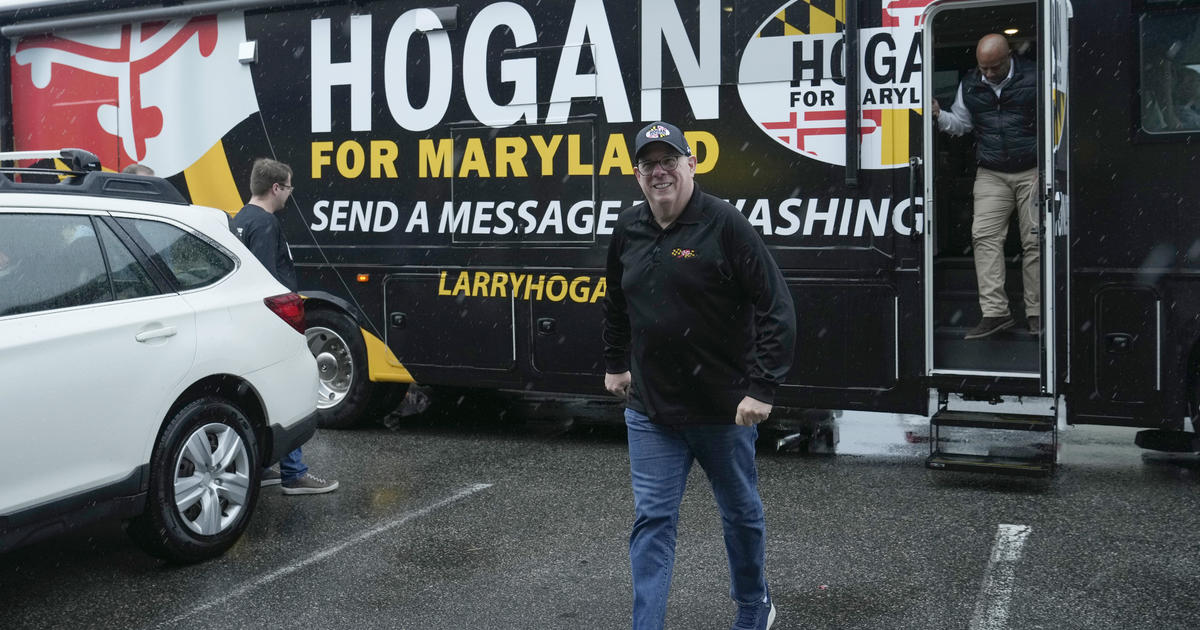Black Population In D.C. Down To 50 Percent
WASHINGTON, Md. -- The nation's capital is on the brink of losing its black majority for the first time in 60 years, according to Census data released Thursday.
Slightly more than 50 percent of Washington's 601,000 residents are black, while 34.8 percent are white, the 2010 Census shows.
Ten years ago, the city was 59.4 percent black and 27.8 percent white. The district gained 50,000 white residents and lost 39,000 black residents over the past decade.
The last Census that showed the city without a black majority was in 1950, when the district was 64.6 percent white. Between 1950 and 1970, Washington lost more than 300,000 white residents and gained more than 250,000 blacks.
The district was 71 percent black in 1970 and remained 70 percent black in 1980 — earning the affectionate nickname "Chocolate City" among black residents.
But since then, as in many big cities, the percentage of blacks has declined as other minorities have increased their numbers significantly.
Analysts had predicted that Washington would lose its majority-black status sometime this decade — but it's happening more quickly than expected. In fact, it may have already happened, given that the black population has likely declined further since last year's Census count.
"The identity of the district is changing. It used to be called 'Chocolate City.' Well, that's no longer necessarily the case," said Benjamin Orr, a research analyst at the Brookings Institution who focuses on D.C. issues. "I think residents and leaders in district government are struggling with how the district defines itself."
The new D.C. is more diverse and wealthier — but with a widening gap between rich and poor. The declining black population is driven largely by lower-income and middle-class black families migrating to the suburbs, analysts say. Neighboring Prince George's County, Md. became the wealthiest majority African-American county in the country. Meanwhile, young white professionals and others able to afford pricey new condos are moving in as downtown neighborhoods are revitalized.
"The district is becoming more attractive to higher-income households, which is increasing the cost of living and pushing lower-income households out," Orr said.
There are now 209,000 non-Hispanic whites living in the district — the most since 1970. There are 301,000 non-Hispanic blacks — the least since 1950. The district has lost nearly 100,000 blacks since 1990.
The Census reported in December that the district's population had grown by nearly 30,000 since 2000, reversing decades of declines. The new data show that increase was driven mostly by whites but also by Hispanics — who can be of any race and now comprise 9.1 percent of the city's population — as well as by Asians (3.5 percent) and multiracial people (2.1 percent of non-Hispanics).
The demographic shift could have serious political implications. Since Congress allowed D.C. residents to elect their own mayor and City Council in 1973, Washington has never had a white mayor. D.C. Council member Marion Barry, who served as mayor for 16 years, said Thursday he doesn't envision that changing.
"Politically, we're not going to be threatened by any change in demographics anytime soon," Barry told The Associated Press. "The black community is not and black politics is not."
Ward 2 — which is 72 percent white and includes downtown and the city's affluent Northwest neighborhoods — had the largest population increase, gaining more than 11,000 residents. The only ward to lose residents was Barry's Ward 8, which is 94 percent black and encompasses Southeast neighborhoods such as Anacostia.
Mark Rom, a political scientist at Georgetown University, said that while white voters won't necessarily favor white candidates, they will have more clout.
"On average, politicians are going to do better if they can appeal to the white voters," Rom said.
Former D.C. Mayor Adrian Fenty, who is biracial, lost his re-election bid last year but had significant white support. Rom said the demographic changes might favor a "Fenty-like candidate" in the future. He also noted that Hispanics and Asians will likely become a key swing vote in future elections.
A poll released this week showed Mayor Vincent Gray, who has been dogged by allegations of pay-for-play politics and nepotism, with just a 17 percent approval rating among whites. His overall approval rating was 31 percent.
Barry said he was disturbed by the black migration to the suburbs and said D.C. government should do more to promote homeownership and provide job opportunities for longtime residents.
The demographic shift "does not close the poverty gap at all. What this has done is shift poverty from Northwest to Southeast," Barry said. "You have to improve the quality of life in some of these low-income neighborhoods."
(Copyright 2011 by The Associated Press. All Rights Reserved.)



